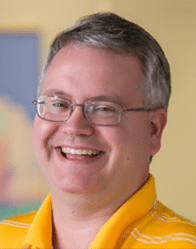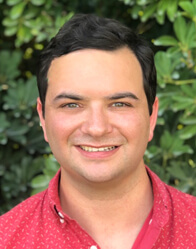Season 1 – Episode 41 – Community Colleges and Baccalaureate Programs
In some states, there is a growing movement to have community colleges provide bachelor’s degrees that train students for specific jobs in the regional employment market. By offering more bachelor’s programs, community colleges can address the gaps in higher education resulting from the rising demand for college degrees. Furthermore, community college bachelor’s programs can focus on specific occupations or meet the needs of the local labor market and economy. Expanding degree programs in community colleges can also promote more significant equity in education by improving access to opportunities for students in all communities, regardless of race.
Episode Transcript
Click to expand/collapse
Darren Gaddis: From CITI Program, I’m Darren Gaddis, and this is On Campus. Today, baccalaureate degrees at community colleges in increasing access and opportunity for students. I spoke with Thomas Norman, professor of Management at California State University, Dominguez Hills.
As a reminder, this podcast is for educational purposes only. It is not intended to provide legal advice or guidance. You should consult with your organization’s attorneys if you have questions or concerns about relevant laws and regulations discussed in this podcast. Additionally, the views expressed in this podcast are solely those of the guest and do not represent the views of their employer.
Hi Thomas. Thank you for joining me today.
Thomas Norman: Oh, thank you. It’s a pleasure to be here.
Darren Gaddis: Thomas, before we get started today, would you be willing to share more about your professional background and your own experience?
Thomas Norman: I’m very happy to do so. I’ve been a professor of management for the last 16 years at California State University’s Dominguez Hills campus. That’s one of 23 campuses in the largest four year system in our country, the Cal State system. Prior to that, I spent two decades working in industry, so I worked for Proctor & Gamble right out of my undergraduate. Upon getting my PhD, began my teaching career at Cal State Dominguez Hills, where I just love serving this generation of mostly first generation students, helping them to kind of connect their dreams to careers, some of which I’ve had, some of which I haven’t. Just providing that motivation and inspiration that they can get to where they want to go, even though a lot of them might not view themselves as traditional students. There’s a lot of imposter syndrome that I’m dealing with, but it’s a great pleasure every day to go in and work with this group.
Darren Gaddis: You’re not actually at a community college, but how do you fit into this larger conversation about baccalaureate degree programs at community colleges?
Thomas Norman: Yeah, great question. So on my campus and all the Cal State campuses have a faculty or an academic senate, I’m an elected member of our executive group to help set faculty policy at Dominguez Hills. But I’ve had the honor for the last nine years to be elected one of two campus representatives to our system academic senate. So we send faculty from all 23 campuses to look at system level issues at what we call the Academic Senate of the CSU Cal State University. And within that group, I’ve been fortunate enough to be elected to become vice-chair on issues affecting the Cal State system within the larger ecosystem of public universities and colleges in California.
That allows me to have a seat in what’s called our ICAS group, Intersegmental Council of Academic Senate. It’s kind of a mouthful, but it means every month I get together with the community college leaders, faculty leaders, and the University of California faculty leaders because California has this master plan, we call it, where initially the top 10% of high school grads were kind of geared towards the UC. The next 33% to the Cal State. And anybody who wants to go on is encouraged to start at the community college system of which a great number do choose to transfer to the UC system, to my system, the CSU. Or they might go out of state, they might go to a private, but it’s really I think the engine of California. I think what drew me there and what helps Silicon Valley, Hollywood, these areas do so well is we really have a great educational system.
Darren Gaddis: With this information and understanding, could you tell us how baccalaureate degree programs at a community college might differ from one that’s offered at a four year university or college?
Thomas Norman: Well, this is going to vary state by state. So let me just share with you what I know of the California experience. Probably five or six years ago, I don’t know the exact year, there was a pilot program suggested that given how many people were going to college, now we now find at the Cal State, it’s not 33%, but closer to 40-50% of high school graduates wanting a college degree. We didn’t have the capacity, even with 23 campuses and almost half a million students in those campuses, there wasn’t enough base for everybody. And there also wasn’t the ability to offer degrees in certain areas community colleges are really good at. So the legislature got together and passed a bill saying, “Go ahead and create a baccalaureate degree if it addresses an unmet workforce need.” They don’t want to put state money into something that there’s not a future for the students. We don’t want people graduating proverbial student in debt with no good job, but also without duplicating programs in curricula at the CSU or the UC.
In curricula, you kind of look at it as classes. We shouldn’t have four year degree in history at both because there’s already 23 CSUs and the UC offering a degree in history or physics or those very common programs. The design is that there’ll be a thoughtful, intentional, consultative process with the higher education system partners, meaning leaders from my system and the UC system will talk to community college leaders as they come up with a new degree program. And if we say, “Hey, this is the same,” I’ll then spend your resources somewhere else. So for example, mortuary sciences. None of our programs have that. There’s not necessarily a desire for us to offer that. So that’s a great area for the community colleges to offer a four year degree because what we are finding in this information age, this knowledge economy, things that may be required one year, two years now really might need four years for somebody to be competitive and get the skills they need to work in the workplace with all the new technology, information, literacy, et cetera.
That’s what’s supposed to happen. There’s a process. That pilot then was expanded to a more permanent system in which we’re having the same in engagement.
Darren Gaddis: Could you walk me through how fulfilling unmet workforce needs and racial inequality gaps have kind of centered this conversation around baccalaureate programs at community colleges?
Thomas Norman: That’s important, whether it’s community college or a four year college. Here I want to really highlight the leadership of my system of which I and faculty colleagues have in a small part. In 2015, we engaged in what we called the Chancellor’s Office 2025 goal on how are we going to reduce the equity gaps? How are we going to increase the graduation rates? And we’ve had incredible success and we’re documenting these. 2022, looking at 2015 as the base year, we increased our four year graduation from 19% to 35%. Now, some might say, “Well, why doesn’t everybody graduate in the four years?” Well, times aren’t the same as they were for a lot of our electeds who graduated in the seventies or eighties. My students don’t sit the dorms, they have nothing to do but study. Most of my students are working 40 hours. Some of them have children, some of them elder care responsibilities, many are commuting. I think if you graduate in six years and those rates have increased from 57% in 2015 to 62% in 2022, you’re absolutely a hero.
What community colleges should be doing is making sure they’re tracking what’s working. The one advantage I’d say that they would have versus some of the Cal States is seeing there are more of them, they are going to be closer to folks, and a lot of people don’t want to drive or commute and they can fit in the work schedule better. But this is where I’d advocate a closer partnership. The community colleges now are encouraged to have an ADT, which stands for Associate Degree for Transfer, for anybody coming in, taking a student ready perspective versus a college ready perspective.
All too often now I get mad to say, “People need to be college ready.” No, I’ve worked in business for 20 years. You don’t tell customers you’ve got to be ready to buy the service. You need to be student ready, embracing the student today, which is not like the students of the sixties or seventies who had four years to basically do nothing, sit in the dorms, think about what party they’re going to go to versus thinking of, “Oh, what am I going to do with my sick child who I have to stay home with and I’m going to miss class tomorrow?”
Darren Gaddis: In thinking of the newer generation, how do community colleges come into play in regards to increasing access for college students?
Thomas Norman: One nice thing that we should all be looking at in the community colleges that I know I look at having been a department chair and an associate dean for a period during my 16 years, is looking at the need for certain qualifications that may not translate into success in teaching today’s students. If we’re looking at students from different backgrounds, they’re very honest. They want to see the professor look more like them. And if you require X number of research articles and PhDs from only certain schools, you’re going to tend to see a whiter group in particular, less diverse that way. Gender, some imbalances not as significant, but you’re going to see definitely fewer Black professors, take one example.
Community colleges often don’t have the same standards. And I’ve been pushing to say, “Do we really need these standards for a lot of the business and management classes?” But let’s find effective educators that can teach versus research. Because UC, University of California, Berkeley, UCLA, that’s our focus, research and creating knowledge. Ours is balanced. And the community college, I think really lead and show the way by taking great educators, people who have jobs perhaps in these industries and can relate to the students, can give them that motivation to say, “Hey, would you like a job like me someday? It’s going to be hard, but stick with it because here’s the prize at the end, something that you’ll love doing.” And instead of thinking, you just have this career you’ll get through, you have this career you’re going to embrace and you’ll feel like you’re not working a day in your life. That leads to more professors of color, professors with different backgrounds in interacting. I think that’s one of the key things to deal with it.
And then the others is the geography. Some communities just don’t want to leave that far. And for just reasons of safety, reasons of belongingness, people often find the college experience very different. The imposter syndrome is very real. And if you can retreat to a place that’s safer that’s a 20 minute drive versus a three hour drive, that’s going to encourage more people to take that chance. More people to persist. So those are advantages. But the other thing I keep in mind and why I keep stressing a partnership between our four year system and the community colleges is post pandemic, we found that with online education, we can reach everybody in California. We can reach people outside of California. Look at Arizona State University everywhere. They’ve set up a campus in downtown Los Angeles. And I’m finding that this Generation Z is really embracing online courses and sometimes too much.
I think there can be a danger in that some skills that are very necessary are best learned physically in the classroom, at least for a portion of the class, there is a rapport I find almost impossible to build entirely online. But that doesn’t mean it’s needed for every course. There’s lots of courses where it’s a lot of just content, memorization, learning terms, learning a language that would work effectively. This is where I would say my system is probably a lot like the community colleges. We’re embracing that technology because another commonality is several of our campuses have seen big drops in enrollment. So there’s been a market pressure to say, “Hey, we don’t want to lay professors off. We don’t want to stop doing things if we don’t have to. If they’re students to serve, how can we find those students we’re not serving?” And out of that necessity, I think that the community colleges have led the way of saying, “Okay, this is what’s going to work for this community.”
The Filipino community in Carson might have a couple different preferences than the community in Santa Monica, but then the community up in El Pasadena is going to have slightly different preferences there too. And unfortunately, there aren’t enough state resources to give every single community college, every Cal State, all the money they need to do everything. But as somebody once said, “I believe we can do anything we want. We just can’t do everything we want.” So as we start to understand what our students want, if we let that guide us, the UC, the community colleges and others listening across the nation, I think have a lot to learn from all the experimentation that’s taking place. Because our community college tends to outnumber the four year schools by a factor of three or four in nearly every state.
Darren Gaddis: Thinking of Generation Z in mind, what factors have contributed to the increased need for baccalaureate programs at community colleges?
Thomas Norman: Just the basic sense of today’s workplace. When our master plan was set up, the goal was 33% would need a college degree. We’re now finding that’s pushing exceeding 50%. So there’s more people who need it for a meaningful job. People want to work. I really get upset when people say, “This generation is lazy or they don’t want to work.” Post pandemic, nobody would take these jobs. Well, the economist, we said, “Why don’t you try raising that wage at your ice cream store $4 an hour? You’d still make money selling your ice cream.” Well, they do it and people come. So I’d actually say this generation is pretty savvy. They don’t want to give up themselves or be exploited, so they’re going to hold firm. And this comes down to the income and equality, which we’ve seen greatly caused by technology in which I so fear with AI and ChatGPT and the way that’s going to transform knowledge work.
We have a choice as a society. We’re going to continue this income equality so that top 10%, or maybe it’ll become the top 5%, will take all the gains are instead are going to reinvest in education like the state of California once did when the Cal State Education was tuition free, truly tuition free. Today, you’ll find that our tuition and fees, the students are paying half of the cost of the education, which puts a burden on them, causes some of them to just be afraid they’re going to have to take out loans. In 1985, there’s a study by our faculty union that found the average Cal State student worked 199 hours at minimum wage to pay for one year of schooling. The most recent data showed that it’s taking 685 hours. That’s not fair. Just because there’s more people going to college. And if you think about it, that extra 20% are even less well off. They tend to be lower income. Their families are struggling. They often need these students to actually help work.
I have so many students who help their father, help their mother with their jobs and to expect that they can suddenly afford to pay $10,000 that often the people in power, the business leaders or elected officials didn’t have to pay. It just seems unfair. So if you wonder why students are struggling, they still have to cook dinner, they have to shop for groceries, they have to care for people. Why students aren’t sleeping as much. We’re seeing student anxiety as an all time high. All these things are really, I think, a symptom of a couple of generations not investing the same amount that was granted to them when they got their education for today, and then blaming the young people for being in debt or for not wanting to work.
So if we actually could invest in all higher education like we do K through 12 and make that commitment, the return I’ve seen the study show that for every dollar we invest in the Cal State, the state will get $7 back in terms of increased taxes over their lifetime because they go into better jobs. Let’s get them that a hundred thousand dollars six figure job. They’re going to pay a lot of California taxes on that. But it’s really a battle when we have to go to the legislature begging for money every year to create the nurses, to create the teachers, the people in the science and STEM fields that are state needs. So for those from California listening, I think this should be an issue for the business leaders. The people at Intel and Google, Apple should be thinking of what a great return they get for helping our community colleges and our four year schools offer the same advantages that most of them had when they were here.
Darren Gaddis: What else should we know about baccalaureate programs at community colleges?
Thomas Norman: Well, this is a trend I think that’s going to be here to stay. The baccalaureate degrees are just one piece. I was in a conference this morning talking about open badging and credentials and micro certificates. Education’s going to be a lifelong pursuit as we’re living longer, as retirement age to get social security increases. We have a lot of people we’re expecting to work a decade, two decades more than maybe was the thought. With the rate of change. Our jobs do not stay the same for five years. So our community college is an essential part of continuing to increase the human capital of each state, each city in our country overall. Absolutely they are. Should we be giving our community college faculty at [inaudible 00:16:07] saying, “Thank you for what you’re doing”? And should we be asking ourselves if we have a role, “Hey, what could I do?” It doesn’t have to be financial support. Is there a place that I could be on an advisory board to help you make that connection between the jobs, the people that I’m hiring and what you’re teaching?
Or what I also love to do is saying, “Hey, would you even consider teaching at a community college?” Community colleges are a great way to innovate and figure out what should be done in different areas. Because if you let a thousand flowers bloom, you’re going to have a lot of different things work. To me, it seems a much more efficient way to allow experiments at the smaller local level to be studied and researched and then expanded appropriately if we have something that has a huge demand.
Darren Gaddis: Thomas, thank you for joining me today.
Thomas Norman: Oh, it was my pleasure. Thank you so much.
Darren Gaddis: Be sure to follow, like and subscribe to On Campus with CITI Program to stay in the know. If you enjoy this podcast, you may also be interested in other podcast from CITI Program, including On Research and On Tech Ethics. You can listen to all of our podcasts on Apple Podcast, Spotify, and other streaming services. I also invite you to review our content offerings regularly as we are continually adding new courses, subscriptions, and webinars that may be of interest to you, like CITI Program’s new environmental health and safety subscription. The environmental health and safety subscription provides organizations with key content areas related to health and safety. All of our content is available to you any time through organizational and individual subscriptions. You may also be interested in CITI program’s AI and Higher Education: Overview webinar.
How to Listen and Subscribe to the Podcast
You can find On Campus with CITI Program available from several of the most popular podcast services. Subscribe on your favorite platform to receive updates when episodes are newly released. You can also subscribe to this podcast, by pasting “https://feeds.buzzsprout.com/1896915.rss” into your your podcast apps.
Recent Episodes
- Episode 40: AI in Higher Education
- Episode 39: Study Abroad Programs
- Episode 38: Graduate Student Advising
- Episode 37: Mental Health and Student Health Services
Meet the Guest

Thomas Norman, PhD – California State University, Dominguez Hills
Dr. Thomas Norman is a management professor at California State University, Dominguez Hills. He is the CSU Academic Senate Vice Chair and serves on the Innovation Incubator and CSUDH Foundation boards. He has two decades of private-sector experience at Procter & Gamble, Cargill, Sun Microsystems, US Bancorp and Wells Fargo.
Meet the Host

Darren Gaddis, Host, On Campus Podcast – CITI Program
He is the host of the CITI Program’s higher education podcast. Mr. Gaddis received his BA from University of North Florida, MA from The George Washington University, and is currently a doctoral student at Florida State University.








